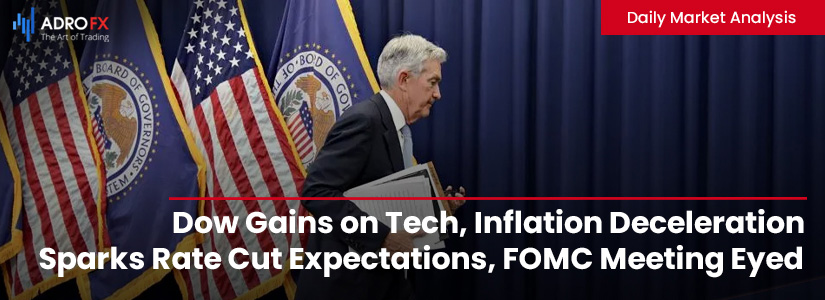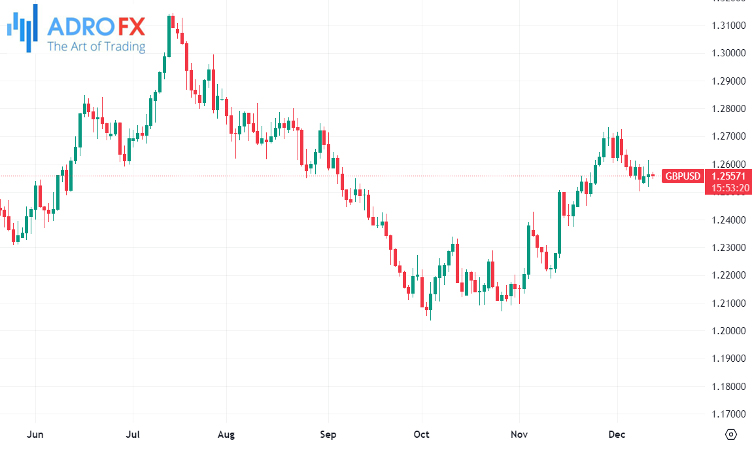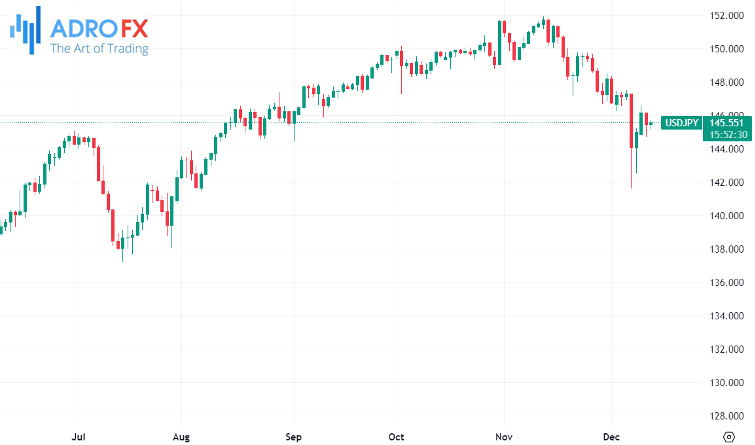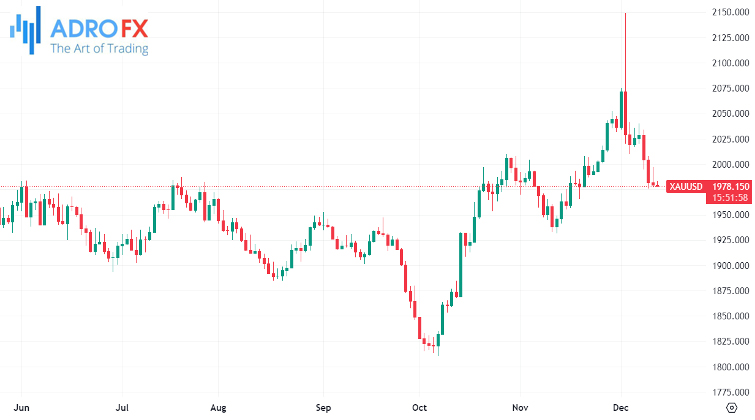Dow Gains on Tech, Inflation Deceleration Sparks Rate Cut Expectations, FOMC Meeting Eyed | Daily Market Analysis

Key events:
- UK - GDP (MoM) (Oct)
- USA - PPI (MoM) (Nov)
- USA - Crude Oil Inventories
- USA - FOMC Statement
- USA - Fed Interest Rate Decision
- USA - FOMC Press Conference
- New Zealand - GDP (QoQ) (Q3)
On Tuesday, the Dow concluded higher, led by the tech sector, as a sustained deceleration in inflation bolstered expectations for an early rate cut in the coming year, just ahead of the Federal Reserve's impending monetary policy decision scheduled for Wednesday.
The 30-stock Dow Jones Industrial Average advanced by 173 points or 0.5%, the benchmark S&P 500 rose by 0.5%, and the technology-focused Nasdaq Composite registered a 0.70% gain. Notably, the main indices on Wall Street reached fresh 52-week highs, with the S&P 500 reaching its highest level since January 2022.

According to data released by the Bureau of Labor Statistics on Tuesday, annual headline consumer price growth eased to 3.1% last month, down from 3.2% in October. The month-on-month reading saw a marginal uptick of 0.1%. Economists' expectations were in line with the reported figures, with forecasts of 3.1% and 0.0%, respectively.
The closely-monitored "core" figure, which excludes volatile items like food and energy, posted a 4.0% annual increase, consistent with the prior month. On a monthly basis, underlying price gains accelerated slightly to 0.3%, compared to 0.2% in October, meeting analysts' expectations.
Market indicators, such as the CME FedWatch tool, suggest a 75% probability of a rate cut in May. Over the weekend, analysts at Goldman Sachs revised their forecast for the first rate cut, now anticipating it in the third quarter of the next year, moving it up from the previously predicted fourth quarter.
In response to these developments, Treasury yields experienced a decline, with the yield on the 10-year Treasury falling by 3.3 basis points to 4.206%.

The Dollar Index experienced a modest easing following a decrease in US Headline Inflation. As the Federal Reserve FOMC meeting concludes tonight, market participants anticipate the US central bank to maintain steady interest rates. The closely watched remarks from Chair Jerome Powell and the Fed's dot plot forecast, projecting the key short-term interest rate, will be subject to close scrutiny.

The Australian Dollar showed relative weakness, slipping to 0.6555 from the earlier 0.6577 earlier in the week. The Aussie traded within its recent range, fluctuating between 0.6540 and 0.6620.

The Pound performed less favorably compared to its counterparts after the latest UK wages and unemployment data revealed a slowdown in wage growth in October, while unemployment remained steady at 4.2%. Average weekly earnings decelerated from September's 7.8% to 7.3%, slightly exceeding forecasts. Despite a slight dip in the Pound following the data, the likelihood of this figure prompting an early shift in the Bank of England's rate policy is considered low. The figures, though slightly reduced, remain historically high and well above the 2% inflation target, while overall job vacancies remain at elevated levels.

Speculation about the Bank of Japan's direction at the upcoming rate-setting meeting next week is contributing to volatility in the Yen. Although USD/JPY began the week with gains, they proved unsustainable, with softer-than-expected US consumer inflation data likely adding to the pressure. One-day volatility on USD/JPY registered 11.6%, compared to 9.92% for the month.

The Gold price remains defensively positioned during the Asian session on Wednesday, currently hovering around the $1,978 region, slightly above its lowest level since November 20 recorded earlier this week.
In addition to inflation concerns, the prevailing risk-on sentiment, further fueled by optimism for additional stimulus measures from China, is identified as a significant factor acting as a deterrent for the safe-haven precious metal.
Nevertheless, geopolitical risks and the growing consensus that the Federal Reserve will commence easing its monetary policy by the first half of 2024 serve as favorable factors for the non-yielding Gold price. Additionally, the uncertainty surrounding the timing of potential interest rate cuts by the US central bank keeps the US Dollar bulls on the defensive, potentially contributing to limiting the downside for the commodity.

Given these mixed factors, traders may exercise caution, refraining from making aggressive directional bets, and may opt to await the outcome of the highly-anticipated two-day FOMC monetary policy meeting.









